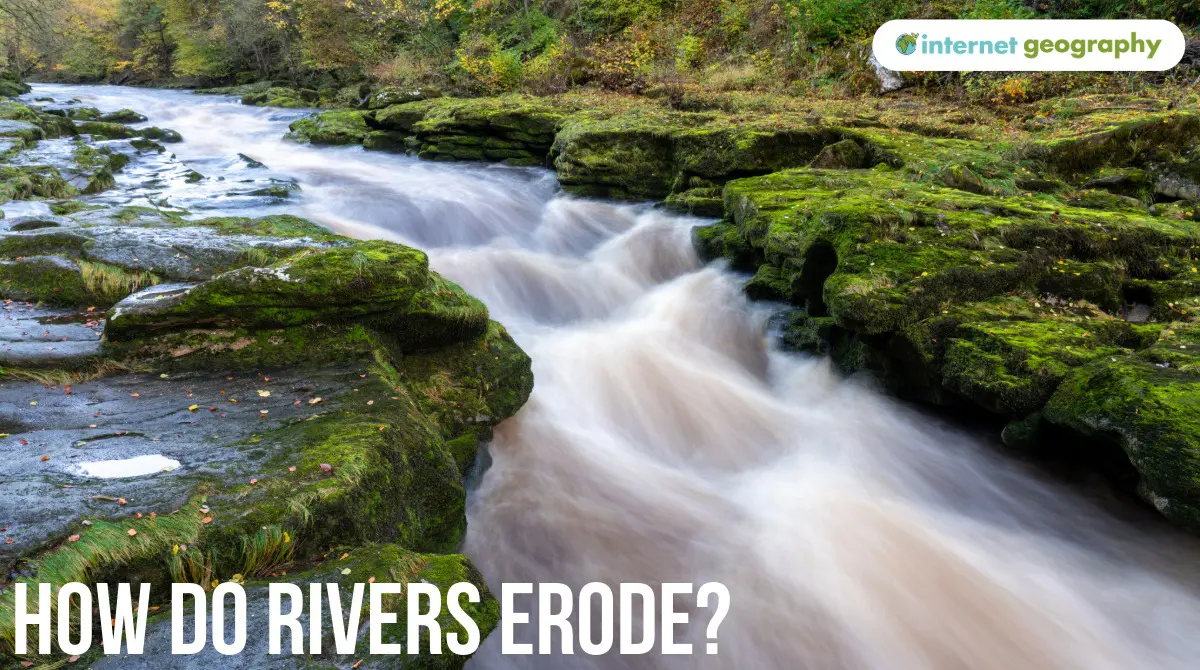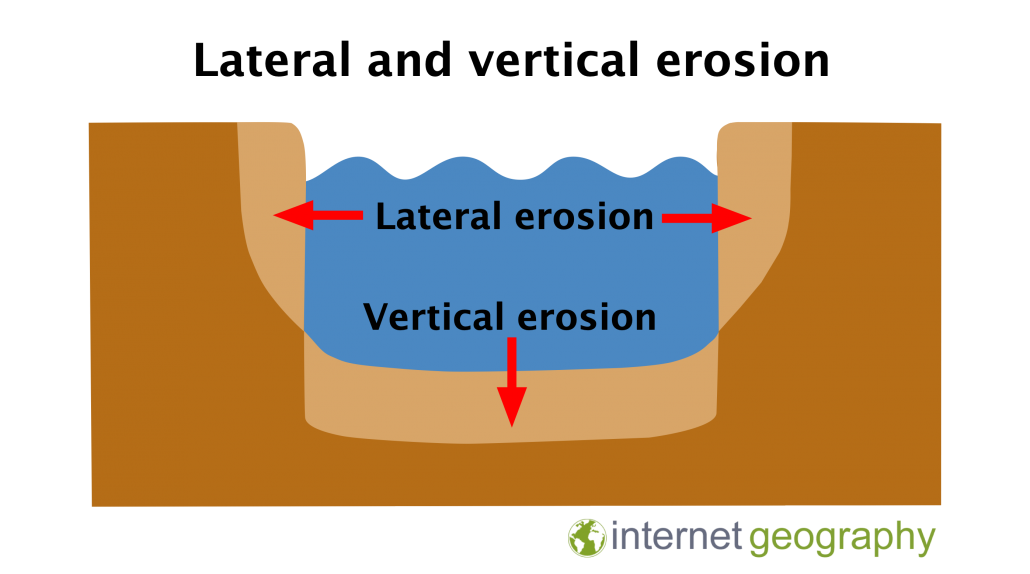How do rivers erode?
Fluvial erosion is the process by which a river wears away the land. The ability of a river to erode depends on its velocity.
Two types of erosion happen at different stages along a river. Vertical (downwards) erosion often occurs in the upper stages of a river, whereas lateral (sideways) erosion typically occurs in the middle and lower stages of a river.
There are four main processes of erosion. These are:
- Abrasion or corrasion
- Attrition
- Hydraulic Action
- Solution or corrosion
What is abrasion or corrasion?
Abrasion, also known as corrasion, is when boulders and stones wear away the river banks and bed. Angular rocks that have entered the channel recently are more abrasive because their edges are still sharp and unrounded. Abrasion is responsible for the river channel’s lateral and vertical erosion (see below).
What is attrition?
Attrition is when sediment particles knock against the bed or each other and break, becoming more rounded and smaller as you move down the river.
What is hydraulic action?
Hydraulic action happens when the force of fast-flowing water hits the river’s bed and banks, pushing water and air into cracks in the rock. The repeated pressure changes gradually weaken the riverbed. Hydraulic action causes vertical (downward) erosion in the upper part of the river and lateral (sideways) erosion to the banks in the lower stretch of the river. This forms the outside bend in a meander in the middle and lower course. Lateral erosion is partly responsible for the migration of means across a floodplain.
What is solution or corrosion?
Solution (or corrosion) happens when the river’s water is slightly acidic and slowly dissolves certain types of rock, such as chalk or limestone. The acid in the water reacts with the minerals in the rock, breaking them down so they dissolve and are carried away by the river. This process is most common in areas with soft, chalky rocks and helps to shape and widen the river channel over time.
What are lateral and vertical erosion?
The diagram below shows how erosion impacts the bed and banks of a river channel, causing vertical and lateral erosion.
Vertical erosion involves the downward cutting and deepening of the riverbed. It is mainly caused by hydraulic action, where fast-flowing water forces air and water into cracks in the bedrock, breaking it apart. This type of erosion is most common in the upper course of a river, where the gradient is steep and the river has high potential energy. Although friction is high and velocity is lower than downstream, much of the river’s available energy is directed downwards, deepening the channel and forming steep-sided valleys or gorges.
Lateral erosion, on the other hand, wears away the sides of the river channel and erodes the banks. It becomes more dominant in the middle and lower courses of a river, where the gradient is gentler and the river meanders across its floodplain. This sideways erosion helps widen the channel and shapes large bends known as meanders.


